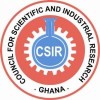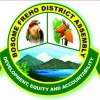Biosphere Learning Laboratory Lake Bosomtwe (BL3B)
Duration of the project: 2021 – 2024 Funded by:

Project background
Biodiversity in Ghana
Featuring both tropical forests and savannahs, Ghana still possesses a high biodiversity and, in some species groups, a high degree of endemism, e.g. with butterflies (HACKMAN, 2014). Some 10 % of the country is tropical forest. Most of this forest is confined to areas with protection status. Pressure on the biodiversity is continuously increasing. Major threats include land-use conversions, habitat degradation, over-exploitation and poaching, and can be related to increasing population and growing agricultural needs. Other threats include invasive species, climate change and wildfires. The declining of Ghana’s freshwater fauna is mainly caused by increasing pollution. One of Ghana’s strategies to stabilise its biodiversity are protected areas: some 16% of its land area is under some form of protection, including three UNESCO Biosphere Reserves (EPA, 2018).
Lake Bosomtwe UNESCO Biosphere Reserve
Lake Bosomtwe (see fig.), one of three UNESCO Biosphere Reserves in Ghana, comprises an area of almost 29,000 ha and was established in 2016 (CBD, 2020). It is a crater lake in the Ashanti Region of Ghana, located ca. 1 hour southeast of the city of Kumasi. Until recently, the reserve had not been included in regional and national planning for future development. According to own experiences in the region, local and regional population is hardly aware of the reserve and acceptance of it as a model site for sustainable development is rather poor.

The population of the city of Kumasi is growing (GHANA STATISTICAL SERVICE, 2014). With increasing living standard, pressure on the reserve increases: ever more local tourists are visiting the area during weekends. Still, there is hardly any touristic infrastructure present in the reserve, no visitor management is installed, and a targeted, sustainably overarching management is strongly needed, as the pressure of people visiting and utilizing the area will increase in the future. In the region around the lake, gold, diamonds, sand, clay and stone deposits, as well as timber and other forest resources are highly sought-after. An increased extraction of these resources would easily lead to overexploitation and degradation of vulnerable ecosystems within the biosphere reserve. On top of all existing threats, climate change is likely to substantially increase the vulnerability of the ecosystem and local population. Considering the anthropogenic pressures on biodiversity and the institutional challenges, the new Lake Bosomtwe Biosphere Reserve needs urgent support to catch up with its mission (ABREU et al., 2016)). Regardless of the fact that surrounding universities have already identified the area as a target for their research, it has not yet lived up to its role as a model area for sustainable development.
Project goals
The projects goal is to build a strong professional network of researchers and teachers around the Lake Bosomtwe Biosphere Reserve and to promote relevant, practical teaching and research of the participating institutions in the area. The network is intended to promote the exchange of knowledge between the participating partners. Biosphere reserves are places of learning in the field of sustainable development. In accordance with the current strategy of the network of biosphere reserves (the Lima Action Plan), the long-term partnership of the research institutions with the area is intended to support biosphere reserve management and sustainable development in biosphere reserves. The aim is to contribute to the conservation of the biodiversity of the area.
Project results
With the aim of obtaining an overview of the current state of research as well as identifying future research fields and concrete research topics in the Lake Bosomotwe Biosphere Reserve, a "Research and Transfer Outline" for the Lake Bosomotwe Biosphere Reserve was developed in a participatory process. The document is available here in English. Lake Bosomtwe: Research and Transfer Outline
Publications
An article about the research project was published in the August 2023 edition "Protecting Biodiversity" of the online magazine D+C Development and Cooperation and E+Z Entwickklung und Zusammenarbeit Read the article on pages 29/30.
Project partner



External project partner




Contact person at HNEE
Postal address:
Eberswalde University for Sustainable Development
Schicklerstraße 5
16225 Eberswalde, Germany












